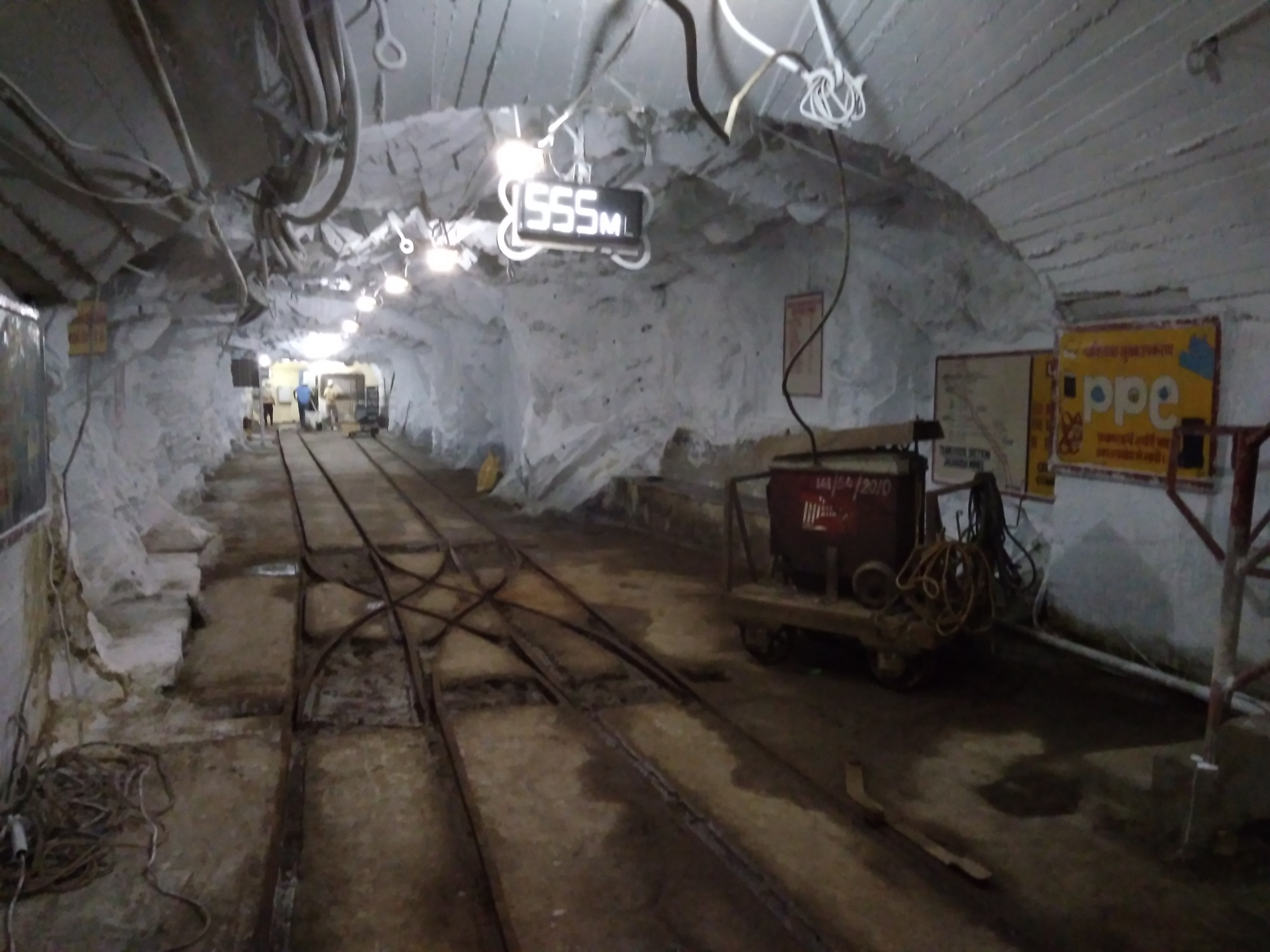SAHA INSTITUTE OF NUCLEAR PHYSICS
Department of Atomic Energy, Govt. of India
Jaduguda Underground Science Laboratory (JUSL)
==========================================
Dark Matter :
Most of the universe is made of "invisible" dark matter – which we can only detect through its gravitational effects .
Galaxies in our universe are rotating with such speed that the gravity induced by their observable matter could not possibly keep them together and they should have ripped apart. For the galaxies in clusters it is believed that we have some interplay which we cannot visualize. Physicists feel, that this "unknown matter effect", is directly giving these galaxies extra mass and also causing the extra gravity which they need to stay together. This unknown matter is hence known as “dark matter” since it is not visible.
Dark matter does not interact with the electromagnetic force and hence does not absorb, reflect or emit light. Thus making it extremely difficult to detect. The inference regarding the existence of dark matter, however, comes only from the gravitational effect, it seems to have on visible matter. Dark matter seems to make up about 27% of the universe. The matter we know that makes up all stars and galaxies only adds upto 5% of the content of the universe!
But how should we explain dark matter?
The familiar material of the universe, known as baryonic matter, is composed of protons, neutrons and electrons. Dark matter composition can be baryonic or non-baryonic matter. If baryonic, then the most potential candidates which can be included are brown dwarfs, white dwarfs and neutron stars. The Supermassive black holes can also emerge as candidates, but these difficult-to-identify objects would need to play a more significant role, than what scientists have observed, to make up the missing mass. However, other studies suggest that dark matter can be more exotic.
Scientists think that dark matter is mostly composed of non-baryonic matter. The lead candidate, WIMPS (weakly interacting massive particles) which have mass of the order of ten to a hundred times the mass of a proton, interact weakly with "normal" matter and thus make them difficult to detect. Massive hypothetical particles termed as "neutralinos" which are heavier and slower than neutrinos, are other candidates, though they are yet to be discovered.
Experiments at JUSL
The proposal is for setting up an underground laboratory at the -555 m level inside the existing mine at UCIL, Jaduguda for experiments in Astroparticle Physics, which require shielding from the cosmic ray background by the natural rock overburden. Such a facility is presently non-existent within the country. The underground laboratory at UCIL mine, named as Jaduguda Underground Science Laboratory (JUSL), was established and inaugurated in September 2017.
More specifically, the first phase of the laboratory covered under this proposal, is set up to determine the gamma ray and neutron background from the radiogenic and the cosmogenic sources, radon level at the underground lab location, etc. Superheated liquid based detector, which is mostly blind to gamma ray background under certain conditions, is being considered as an active detector to be placed at JUSL.
The research work to be done at the underground laboratory will be supported by adequate theoretical endeavor and simulations, as well as developmental aspects, involving radiation detectors and related electronics aimed at high sensitivity under very low radiation and noise background levels. The experiments to be carried during this phase and the resulting data will be useful for the upcoming major underground laboratory facilities and experiments to be conducted therein. The work will be supported by multi-institutional collaborative efforts involving major research institutes, apart from SINP which is taking the lead role in establishing the laboratory, like BARC, VECC, etc.
Publications [selected]:
1. Measurements of gamma ray, cosmic muon and residual neutron background
fluxes for rare event search experiments at an underground laboratory
https://doi.org/10.1016/j.astropartphys.2022.102700
2. Measurement of cosmic-ray muon flux in the underground laboratory at
UCIL, India, using plastic scintillators and SiPM
10.1016/j.nima.2021.165083
3.The background study at 555 m deep underground with superheated
emulsion detector
https://doi.org/10.1016/j.nima.2021.165450
4. Search for coherent bremsstrahlung from spontaneous fission at 555
meter deep underground laboratory
https://www.sciencedirect.com/science/article/pii/S0370269321007000#!
5. Probing low-mass WIMP candidates of dark matter with tetrafluoroethane
superheated liquid detectors
https://doi.org/10.1103/PhysRevD.101.103005
====================================================
Links(reviews):
- https://www.sciencedirect.com/science/article/abs/pii/S1387647321000191
- https://www.sciencedirect.com/science/article/abs/pii/S0146641021000193?via%3Dihub
- https://inspirehep.net/literature/1747818
- https://journals.aps.org/rmp/abstract/10.1103/RevModPhys.90.045002
- https://www.nature.com/
articles/nphys4039 - https://www.worldscientific.com/doi/10.1142/9789814390163_0011
====================================================
This email address is being protected from spambots. You need JavaScript enabled to view it. ; Prof. Debasish Das (web-page contact)
